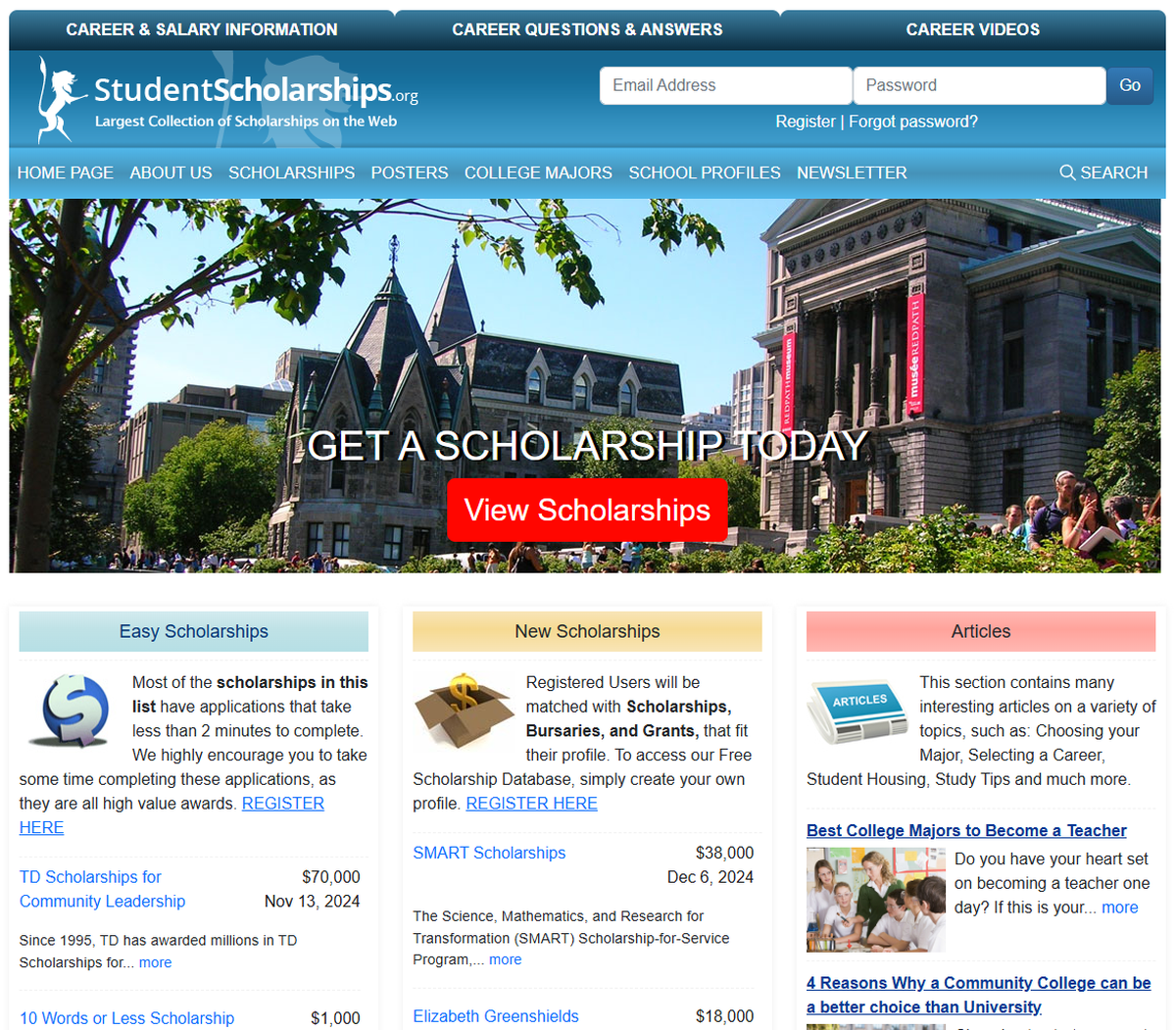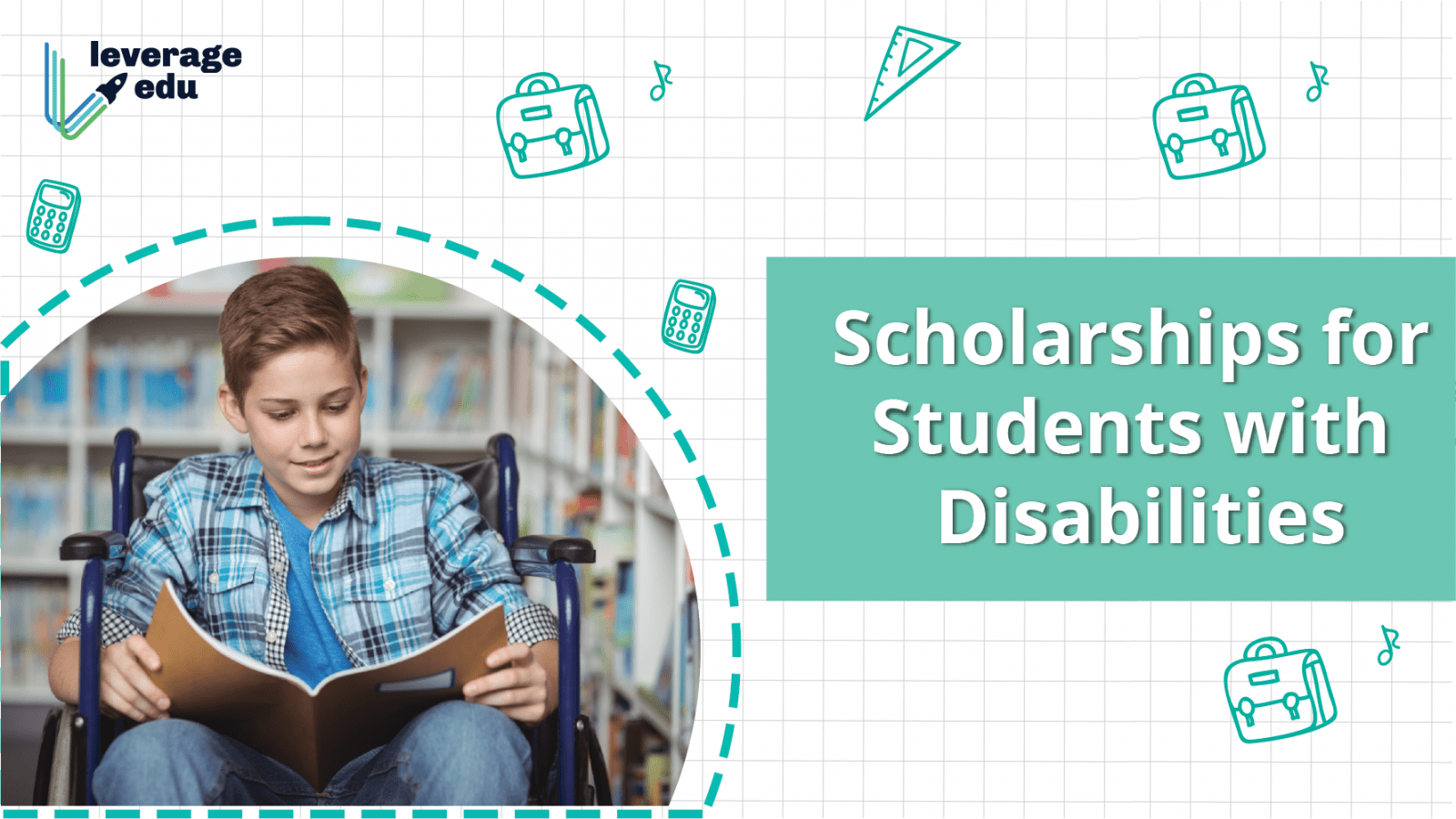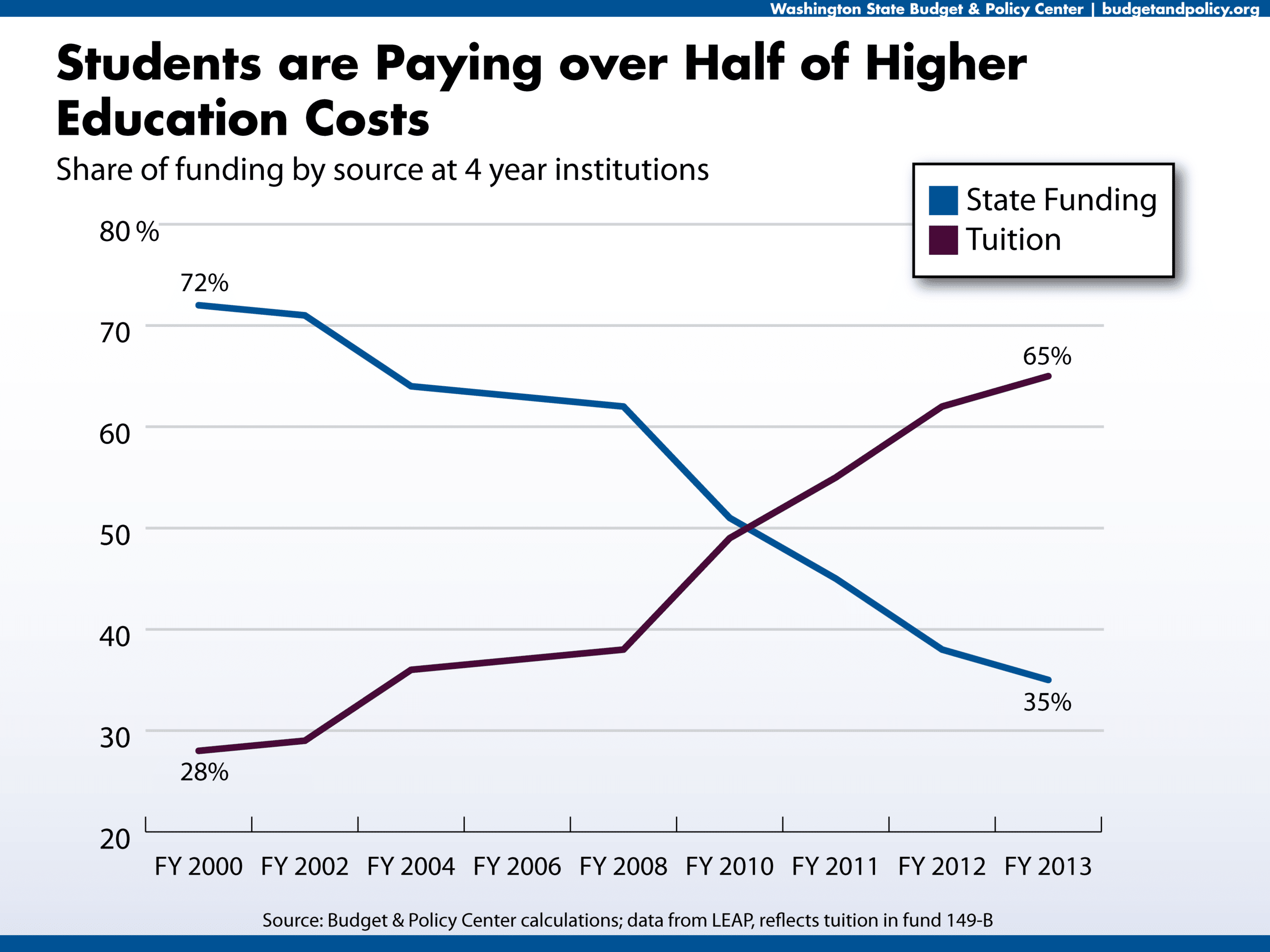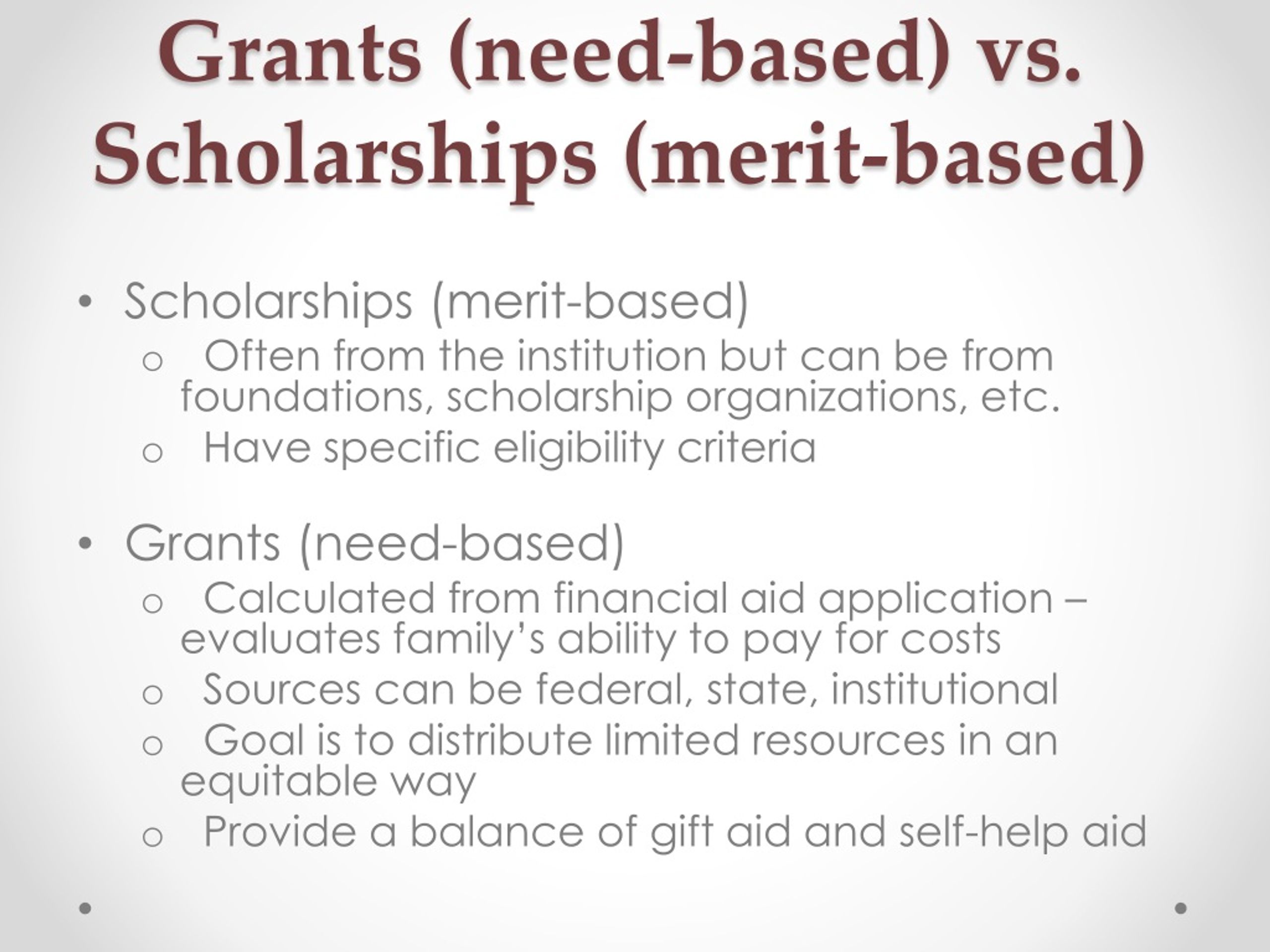Scholarships for Undergraduate Students
Scholarships for undergraduate students represent a vital pathway to higher education, opening doors to countless opportunities. Securing funding can significantly alleviate the financial burden, allowing students to focus on their studies and personal growth. This guide explores the diverse landscape of undergraduate scholarships, providing a comprehensive overview of types, sourcing strategies, application processes, and financial management tips. Understanding these elements empowers students to navigate the scholarship application process effectively and maximize their chances of success.
From merit-based awards recognizing academic excellence to need-based grants assisting financially disadvantaged students, the options are vast. This guide will delve into each type, providing examples, resources, and practical advice to help you find and secure the funding you need to achieve your educational goals. We’ll also address the crucial aspects of crafting a compelling application and responsibly managing your scholarship funds.
Types of Undergraduate Scholarships
Securing funding for undergraduate education can significantly reduce financial burdens and allow students to focus on their studies. Scholarships are awarded based on various criteria, offering diverse opportunities for prospective and current undergraduates. Understanding the different types of scholarships available is crucial for successful applications.
Merit-Based Scholarships
Merit-based scholarships recognize and reward academic excellence, talent, or exceptional achievements. These awards are not based on financial need but on the student’s demonstrated capabilities. The selection process typically involves reviewing academic transcripts, standardized test scores, extracurricular activities, and essays.
| Scholarship Type | Funding Source | Eligibility Criteria | Application Process |
|---|---|---|---|
| National Merit Scholarship | National Merit Scholarship Corporation | High PSAT/NMSQT scores, strong academic record, and recommendation from high school counselor. | Taking the PSAT/NMSQT, meeting qualifying scores, and completing the application process. |
| University-Specific Merit Scholarships | Individual Universities | High GPA, strong SAT/ACT scores, impressive extracurricular activities, and compelling essays. Requirements vary widely depending on the university. | Applying to the university and completing the scholarship application section within the university’s application portal. |
| Dean’s List Scholarships | Individual Colleges/Universities | Maintaining a high GPA, typically above a 3.5 or 3.7 on a 4.0 scale, throughout a specified period (semester or academic year). | Automatic consideration upon achieving the required GPA; some institutions may require separate applications. |
Need-Based Scholarships
Need-based scholarships are awarded to students who demonstrate significant financial need. These scholarships are designed to help students from low-income backgrounds afford college. Financial need is typically determined through the completion of the FAFSA (Free Application for Federal Student Aid) or a similar institutional application.
| Scholarship Type | Funding Source | Eligibility Criteria | Application Process |
|---|---|---|---|
| Pell Grants | Federal Government | Demonstrated financial need as determined by the FAFSA. Income and family size are key factors. | Completing the FAFSA and meeting the eligibility requirements. Awards are automatically disbursed to eligible students. |
| Institutional Need-Based Scholarships | Colleges and Universities | Demonstrated financial need as determined by the institution’s financial aid office, often through the CSS Profile or similar application. | Submitting the required financial aid application (FAFSA and/or CSS Profile) and applying for institutional scholarships. |
| State-Specific Need-Based Scholarships | State Governments | Residency in the state and demonstrated financial need, often determined through the state’s financial aid application process. | Completing the state’s financial aid application and meeting the eligibility requirements. |
Subject-Specific Scholarships
Subject-specific scholarships are awarded to students pursuing specific fields of study. These scholarships often come from professional organizations, corporations, or foundations interested in supporting future professionals in their respective fields.
| Scholarship Type | Funding Source | Eligibility Criteria | Application Process |
|---|---|---|---|
| STEM Scholarships | Various foundations, corporations, and professional organizations (e.g., National Science Foundation, Google, etc.) | Major in a STEM field (Science, Technology, Engineering, Mathematics), strong academic record in related subjects, and sometimes research experience or demonstrated interest. | Application processes vary widely; some may require essays, letters of recommendation, and transcripts, while others may have a more streamlined process. |
| Arts Scholarships | Arts organizations, foundations, and universities | Major in an arts-related field (e.g., music, visual arts, theatre), demonstrated talent through portfolio submissions, auditions, or past achievements. | Typically involves submitting a portfolio of work, auditioning, or writing an essay showcasing artistic skills and achievements. |
| Business Scholarships | Business organizations, professional associations (e.g., American Marketing Association), and universities with business schools | Major in business or a related field, strong academic record, and sometimes relevant work experience or extracurricular activities. | Application processes vary; may include essays, letters of recommendation, and a resume highlighting relevant experiences. |
Finding Undergraduate Scholarships
Securing funding for your undergraduate education can significantly reduce financial strain and allow you to focus on your studies. A proactive and strategic approach to searching for scholarships is crucial. This section outlines a step-by-step process to help you find and apply for undergraduate scholarships successfully.
A Step-by-Step Guide to Finding Scholarships
Finding the right scholarship requires dedication and organization. Begin by creating a comprehensive list of your qualifications (GPA, extracurricular activities, intended major, etc.) to target scholarships that align with your profile. Then, follow these steps:
- Utilize Online Search Engines: Employ targeted keywords when searching. Instead of a broad search like “scholarships,” try “engineering scholarships for women” or “scholarships for students with disabilities.” Experiment with different search terms to broaden your results.
- Explore Scholarship Databases: Dedicated scholarship databases compile opportunities from various sources. These databases often include filtering options based on criteria such as major, GPA, and ethnicity, allowing for more efficient searching.
- Contact Your College’s Financial Aid Office: Your college’s financial aid office is a primary resource. They possess detailed knowledge of institution-specific scholarships and can guide you through the application process and provide personalized advice.
- Regularly Check for Updates: Scholarship deadlines vary. Regularly revisit websites and databases to check for new opportunities and ensure you don’t miss any deadlines.
- Organize Your Applications: Create a spreadsheet to track application deadlines, required documents, and submission status. This helps avoid missing deadlines and ensures a well-organized application process.
Valuable Scholarship Resources
Numerous websites and organizations specialize in compiling scholarship opportunities. Exploring these resources can significantly expand your search.
- Fastweb: A comprehensive database with a wide range of scholarships, covering various criteria and academic fields.
- Scholars4dev: Focuses on scholarships for students from developing countries pursuing higher education internationally.
- Peterson’s: Provides a vast database of scholarships, financial aid options, and college information.
- Unigo: Offers a user-friendly interface and personalized scholarship recommendations based on individual profiles.
- College Board: A well-known organization providing resources for college planning, including scholarship search tools.
Networking for Hidden Scholarship Opportunities
While online resources are invaluable, many scholarships remain unadvertised. Networking plays a crucial role in uncovering these hidden opportunities.
Building strong relationships with mentors, professors, and career counselors can open doors to scholarships not widely publicized. Mentors can offer personalized guidance and insights, potentially knowing about scholarships tailored to your specific interests or background. Professors, often involved in departmental scholarship committees, might be aware of funding opportunities relevant to their field. Actively engaging with these individuals through office hours, research projects, and campus events can significantly enhance your chances of discovering such opportunities. Regularly attending college events and career fairs can also present networking opportunities that might lead to hidden scholarship opportunities.
The Scholarship Application Process
Securing a scholarship often involves a rigorous application process. Understanding the components and timelines involved is crucial for maximizing your chances of success. Careful preparation and attention to detail are key to creating a strong and competitive application.
The scholarship application process typically involves several key components, each designed to provide a comprehensive picture of the applicant’s qualifications and potential.
Typical Application Components
A typical scholarship application will request several documents and materials to assess your suitability. These commonly include:
- Essays: Essays are a critical component, allowing you to showcase your personality, experiences, and aspirations. They provide a platform to demonstrate your writing skills and articulate your goals clearly and persuasively. Many applications will include specific essay prompts, requiring you to address particular themes or experiences.
- Transcripts: Official academic transcripts from your high school or college provide a record of your academic performance, including GPA, course selections, and grades. These transcripts verify the information you provide about your academic achievements and demonstrate your academic capabilities.
- Letters of Recommendation: Letters of recommendation offer insights into your character and abilities from individuals who know you well, such as teachers, professors, counselors, or employers. These letters should highlight your strengths, work ethic, and potential for success.
- Financial Documentation: Depending on the scholarship, you may need to provide documentation related to your financial need. This might include tax returns, family income statements, or other financial records to support your claim for financial assistance.
Sample Scholarship Application Timeline
Creating a timeline is essential to ensure you meet all deadlines. The following table provides a sample timeline; remember to adjust it to reflect the specific deadlines of the scholarships you are applying for.
| Task | Deadline |
|---|---|
| Research scholarships and identify target opportunities | 2 months before application deadlines |
| Request letters of recommendation | 1 month before application deadlines |
| Gather all required documents (transcripts, financial info) | 2 weeks before application deadlines |
| Draft and revise scholarship essays | 1 week before application deadlines |
| Complete and submit the application | Application deadline |
Crafting a Compelling Scholarship Essay
Your scholarship essay is your opportunity to stand out from other applicants. A well-written essay should highlight your unique strengths, achievements, and aspirations.
To create a compelling essay:
- Focus on a specific theme or experience: Rather than trying to cover everything, concentrate on a specific event, accomplishment, or personal quality that demonstrates your suitability for the scholarship.
- Show, don’t tell: Use vivid language and specific examples to illustrate your points rather than simply stating them. For example, instead of saying “I am a hard worker,” describe a specific situation where your hard work led to success.
- Connect your experiences to the scholarship’s goals: Clearly articulate how your goals and aspirations align with the scholarship’s mission and values. Demonstrate why you are a good fit for the scholarship and how receiving it would benefit you and the community.
- Proofread carefully: Errors in grammar and spelling can detract from your essay’s impact. Thorough proofreading is essential to ensure your essay is polished and professional.
Managing Finances with Scholarships
Securing a scholarship is a significant achievement, representing a substantial step towards funding your undergraduate education. However, simply receiving the funds isn’t enough; effective management is crucial to maximizing their impact and ensuring financial stability throughout your studies. This section will guide you through practical strategies for budgeting, saving, investing, and responsibly allocating scholarship funds to cover educational expenses.
Managing your scholarship money effectively requires a structured approach. Careful planning and consistent monitoring are key to avoiding financial stress and making the most of this valuable resource. Understanding your expenses and income allows for informed decision-making, preventing impulsive spending and promoting long-term financial health. This section will explore budgeting methods, saving strategies, and responsible investment options suitable for undergraduate students.
Budgeting Methods for Undergraduate Students
Creating a budget is fundamental to managing your finances. A budget provides a clear overview of your income and expenses, allowing you to track spending and identify areas for potential savings. Several methods can be employed, each with its own advantages.
- 50/30/20 Budget: This popular method allocates 50% of your after-tax income to needs (tuition, rent, groceries), 30% to wants (entertainment, dining out), and 20% to savings and debt repayment. For a student receiving a $10,000 scholarship, this might mean allocating $5,000 to essential expenses, $3,000 to discretionary spending, and $2,000 to savings and any outstanding student loans.
- Zero-Based Budget: This approach involves allocating every dollar of your income to a specific category, ensuring that your income equals your expenses. This method requires detailed tracking of all spending, but it provides a comprehensive view of your financial situation. For example, a student might allocate specific amounts for textbooks, transportation, and social activities, ensuring all scholarship funds are accounted for.
- Envelope System: This cash-based method involves assigning cash to different spending categories (e.g., groceries, entertainment) and placing it in separate envelopes. Once the cash in an envelope is depleted, spending in that category stops for the period. This can be particularly helpful in controlling impulsive spending.
Saving and Investing Strategies
While covering immediate educational expenses is paramount, building savings and exploring investment opportunities should also be considered. Savings provide a financial safety net for unexpected expenses, while investing can help your money grow over time.
Saving a portion of your scholarship money, even a small amount, is crucial. Consider setting up a high-yield savings account to earn interest on your deposits. For longer-term goals, such as graduate school or starting a business, exploring low-risk investment options like index funds or government bonds might be beneficial. It is important to remember that investment involves risk and to seek advice from a financial advisor before making any decisions.
Responsible Financial Decision-Making
Responsible financial decision-making is essential for students receiving financial aid. This includes avoiding high-interest debt, such as payday loans, and practicing mindful spending habits. Creating a budget and sticking to it, tracking expenses, and regularly reviewing your financial progress are vital components of responsible financial management. Seeking advice from a financial advisor or university financial aid office can provide additional support and guidance in making informed financial choices.
Impact of Scholarships on Undergraduate Students
Scholarships significantly influence the undergraduate experience, extending beyond mere financial assistance to shape academic trajectories, career paths, and overall well-being. The positive effects are substantial, but it’s crucial to acknowledge the potential financial challenges that can still persist even with scholarship support.
Positive Impacts of Scholarships on Undergraduate Students
Scholarships alleviate the significant financial burden of higher education, enabling students to focus more intently on their studies rather than worrying about tuition fees, accommodation, and living expenses. This reduction in financial stress directly translates into improved academic performance. Studies have shown a correlation between reduced financial strain and higher GPAs, increased graduation rates, and greater engagement in extracurricular activities. Furthermore, scholarships can open doors to opportunities that might otherwise be inaccessible, such as studying abroad or participating in specialized research programs. This broadened access leads to enhanced learning experiences and the development of valuable skills, ultimately boosting career prospects. The psychological benefits are equally important; the confidence and sense of achievement derived from securing a scholarship can significantly improve a student’s overall well-being and self-esteem.
Reduced financial stress leads to improved academic performance, higher graduation rates, and increased engagement in extracurricular activities. Scholarships open doors to opportunities that boost career prospects and improve overall well-being.
Challenges in Managing Finances Despite Scholarships
Even with scholarship funding, many students face financial challenges. The amount awarded may not fully cover all educational expenses, leaving a gap that requires additional funding through part-time jobs, loans, or family contributions. Managing a budget effectively, balancing academic responsibilities with work commitments, and navigating the complexities of financial aid can be overwhelming for some. Unexpected expenses, such as medical bills or emergency travel, can also disrupt carefully laid financial plans. Furthermore, the need to prioritize expenses—choosing between textbooks and groceries, for instance—can create additional stress and potentially impact academic focus. For example, a student receiving a partial scholarship might still need to work 20 hours a week, potentially affecting their study time and overall academic performance. Effective financial planning and budgeting are essential for mitigating these challenges.
Even with scholarships, students may still face financial challenges due to insufficient funding, unexpected expenses, and the need to balance work and studies. Effective budgeting and financial planning are crucial for mitigating these difficulties.
Final Review
Successfully navigating the world of undergraduate scholarships requires diligent research, strategic planning, and effective communication. By understanding the various scholarship types, utilizing available resources, and crafting compelling applications, students can significantly increase their chances of securing financial aid. Remember, securing a scholarship is not just about financial assistance; it’s about recognizing and rewarding academic achievement and potential. This guide serves as a roadmap, empowering you to confidently pursue your educational aspirations and build a brighter future.









